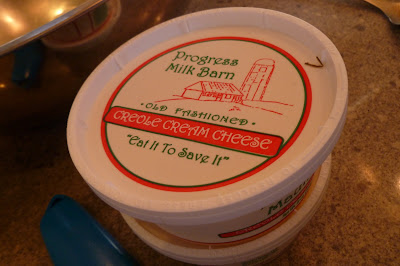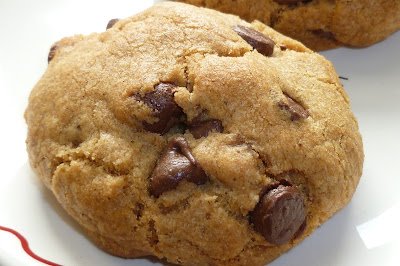 Yes, I'm still writing up that 4-course meal at the New Orleans Cooking School. This is the last course and needs its own post to acknowledge properly. At the Crescent City Farmer's Market that morning, Poppy bought several tubs of Creole Cream Cheese and told us the story of how it was "brought back" after it almost went into extinction since people had stopped making it for awhile. She focuses on bringing foods back from extinction and one of her sayings is "Eat it to save it". So true - foods go extinct if no one's eating them so if you want to "save" your favorite foods, keep eating them.
Yes, I'm still writing up that 4-course meal at the New Orleans Cooking School. This is the last course and needs its own post to acknowledge properly. At the Crescent City Farmer's Market that morning, Poppy bought several tubs of Creole Cream Cheese and told us the story of how it was "brought back" after it almost went into extinction since people had stopped making it for awhile. She focuses on bringing foods back from extinction and one of her sayings is "Eat it to save it". So true - foods go extinct if no one's eating them so if you want to "save" your favorite foods, keep eating them. |
| The Creole cream cheese "custard" before going into the freezer |
Frozen Creole Cream Cheese
2 pints Creole Cream Cheese
1/2 pint heavy cream
1/4 cup sugar
1 tablespoon vanilla
Mix all ingredients together until smooth in food processor or by pressing through a sieve. Freeze in ice cream freezer or in stainless steel bowl in freezer, stirring occasionally until mixture reaches soft serve consistency.
Note: Does not keep well in the freezer so eat it all :). Or, before re-serving, allow to thaw slightly and mix to restore soft serve consistency.
We'd had such good food for lunch that I feel almost guilty admitting cream cheese still isn't my thing, Creole or otherwise. The bite or the tang still doesn't go well with my sweet tooth. However, the calas that were served with them? To die for.
 |
| The Calas mixture |
 |
| Poppy shaping the calas with two spoons before dropping into the hot oil |
 |
| Frozen Creole Cream Cheese with Calas |
 |
| A close up of the inside of a calas |
2 cups cooked rice
6 tablespoons flour
3 heaping tablespoons sugar
2 teaspoons baking powder
1/4 teaspoon salt
1/4 teaspoon vanilla
nutmeg
2 eggs
powdered sugar for dusting
Mix the rice and dry ingredients together thoroughly. Add the eggs and when thoroughly mixed, drop by spoonfuls into hot deep fat (oil), at 360 degrees. Fry until brown. Drain on paper towels. Sprinkle with powdered sugar and serve hot.
Note: Keep rice mixture cool (below 70 degrees) or it might not hold together when frying.






































